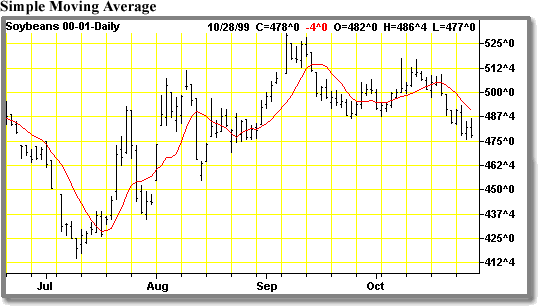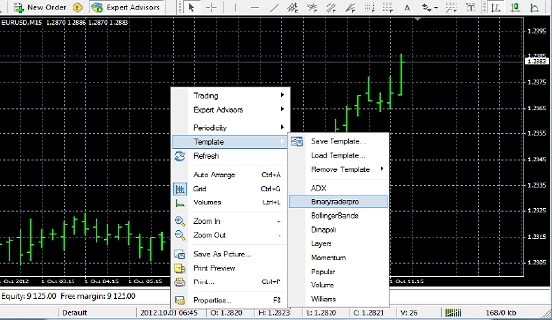Top 5 technical indicators to trade commodities
Post on: 5 Июль, 2015 No Comment

Trading & Technical Analysis question
Top 5 technical indicators to trade commodities
Important technical indicators
What are the most popular technical indicators used to trade commodities over the short term (1-3 months), and do they differ depending upon the commodity traded?
The technical analyst will use a number of methods when reviewing commodity markets. These methods typically include such things as Price Action (pattern recognition, candle stick charts, Elliott Wave analysis, etc.), Seasonal Factors and Technical Indicators.
Given the nature of the question this response will focus on the latter.
When trading commodities, a technical analyst will most likely use the same indicators on a chart to predict the future as with many other instruments (e.g. equities). When looking at the big picture, charts that reflect long periods (e.g. weekly or monthly) should be used to assess the primary trends. Shorter period charts (e.g. daily) are used mainly to determine the entry and exit point of a trade.
Technical Indictors fall into different categories, but the Indicators that most technical analysts use are a measure of momentum.
Momentum Indicators, as the name suggests, measure the momentum behind the move. Just as a car will struggle to move forward without a foot on the accelerator, so too will a market struggle to move higher if momentum begins to falter. On the downside, once downward momentum begins to abate, the prospect of stability and a renewed upwards trend begin to improve.
Momentum Indicators fall into two broad categories, Trend Following and Oscillators. Trend Following Indicators include Moving Averages, Bollinger Bands and Moving Average Convergence/Divergence (MACD). Oscillators encompass such indicators as the Relative Strength Index (RSI) and the Stochastic.
Before applying any of the Indicators, the trader or investor needs to firstly identify the type of market; is it a ranging or trending market? This needs to be determined because Oscillators are ineffective in trending markets, and similarly, Trend Following indicators are misleading in ranging markets.
Oscillators register overbought and oversold market levels, and the problem with using them in trending markets is that they will move to overbought or oversold levels and stay there for quite some time. This will cause the trader to exit or enter prematurely. Conversely, Trend Following indicators will whipsaw traders in a ranging market.
Therefore, when using Technical Indicators in the analysis of commodity markets, the first requirement is to identify the trend. Once the trend has been identified, the trader can then apply some of the commonly used Indicators mentioned above: Moving Averages, MACD, the RSI, the Stochastic and Bollinger Bands.
Lets take a look at each in turn:
Moving Averages
The simplest indicator one can use is the moving average. This can, for example, be the 9 and 20 day moving averages (MA). The analyst will study their cross-overs and the relative position of the price with respect to the moving averages. Prices movements on a chart can be shown in different formats such as bars, candles or lines. The cross-over between two moving averages may signal a change in trend. When the fast MA (9 day) crosses the slow MA (20 day) from below to above, it will signify a bullish trend. If it crosses from above to below, it will signify a bearish trend. Moving averages may in some situations be used as support or resistance levels for a given trade.
Another commonly used indicator is the MACD, which is an abbreviation for Moving Average Convergence Divergence. The MACD is a trend-following momentum indicator that measures the difference between two Exponential Moving Averages (EMA).
Simply put, when the MACD is rising it indicates that the 12 day EMA is trading above the 26 day EMA. This implies positive momentum. If this is above the trigger line (the 9 day EMA) then the stock is considered bullish. If both lines are falling, the stock is under selling pressure.
The simplest interpretation of a bullish (bearish) moving average crossover occurs when MACD moves above (falls below) its 9-day EMA or trigger line. If a market is trending down but the trigger line rises above the MACD, this implies that downward momentum is decreasing and there is a good chance that a reversal is imminent.
The Relative Strength Index (RSI) is used to identify when a market is overbought or oversold. It is computed by analysing all the bullish ranges against all the bearish ranges during a particular period of time (usually 14 days). By adding all the bullish trades (when prices went up) and dividing it by the summation of the bearish days (when prices went down) we then turn it into an index from 0 to 100. A general rule is that when the RSI crosses the 30 line from below, it signifies a bullish signal and when it crosses the 70 line from above, it signifies a bearish signal.
This indicator is based on the observation that, as price is moving higher the closing price tends to be closer to the upper end of the days price range. And when prices are falling, the closing price tends to gravitate to the lower end of the days range.
The Stochastic is plotted as two lines called %K, a fast line and %D, a slow line. The most common time period for %K is 14 days, but like the RSI it is best to experiment to find what time period works best for a particular market. What %K measures on a scale of 0 to 100, is where todays close is relative to the total 14 day range. The %D line is a moving average of %K.
Readings above 80 are considered overbought and readings below 20 are considered oversold.
Bollinger Bands
The basis of these relate to the theory that a markets probable movements (up or down) can be traced to two standard deviations. This means that 90% of all price movements will be confined within a band around the mean. The latter is usually computed from a 20-day moving average and the bands are on either side of the mean. The bands will contract or expand as the price of the commodity oscillates within the bands. As the daily ranges approach the band on either side and exceed the band value, it may signify that a reversal is imminent.
Interpretations
With regard to the MACD, the RSI and the Stochastic, the above rules are a very simplistic interpretation and will lead to many false signals. A better interpretation is to:
1. identify support and resistance levels;

2. define the signal line and look for breaks above or below it; and
3. wait for divergences to develop from overbought or oversold levels.
Examples:
An example of using support and resistance levels on an indicator
The study below shows the MACD breaking above the signal line which is a natural support/resistance level- in August 2004 (A). This confirmed the change in trend from Bearish to Bullish.
In September 2005 (B), the MACD moved back to test the support of the signal line, and bounced from it thereby confirming that the trend was still positive. This occurred even as price had broken below a significant support level thus the support on the indicator was more reliable than the price support.
In April 2007 (C) the MACD broke below the signal line confirming the change from Bull to Bear.
Subsequently, the MACD was rejected from the signal line in December 2007(D). This gave an early warning that the rally from September was about to fail.
GOLD: A good example of the combination of two different indicators; Moving Averages (a trend following indicator) and the Stochastic (an oscillator).
In late July, the gold price broke below the 9 and 20-day moving averages, and the Stochastic (an oscillator) turned down from overbought levels and broke below the signal line. This combination registered a Sell signal.
However, note that the Stochastic pushed to overbought levels earlier in the year, and stayed there for an extended period. Thus taking an overbought reading as a signal to Sell is not, by itself, a good trading strategy. Price was still above rising moving averages at the time; confirming a rising trend therefore an overbought level on the Stochastic was not a reliable indicator.
The trader will take this into consideration when assessing the outlook for a commodity.














